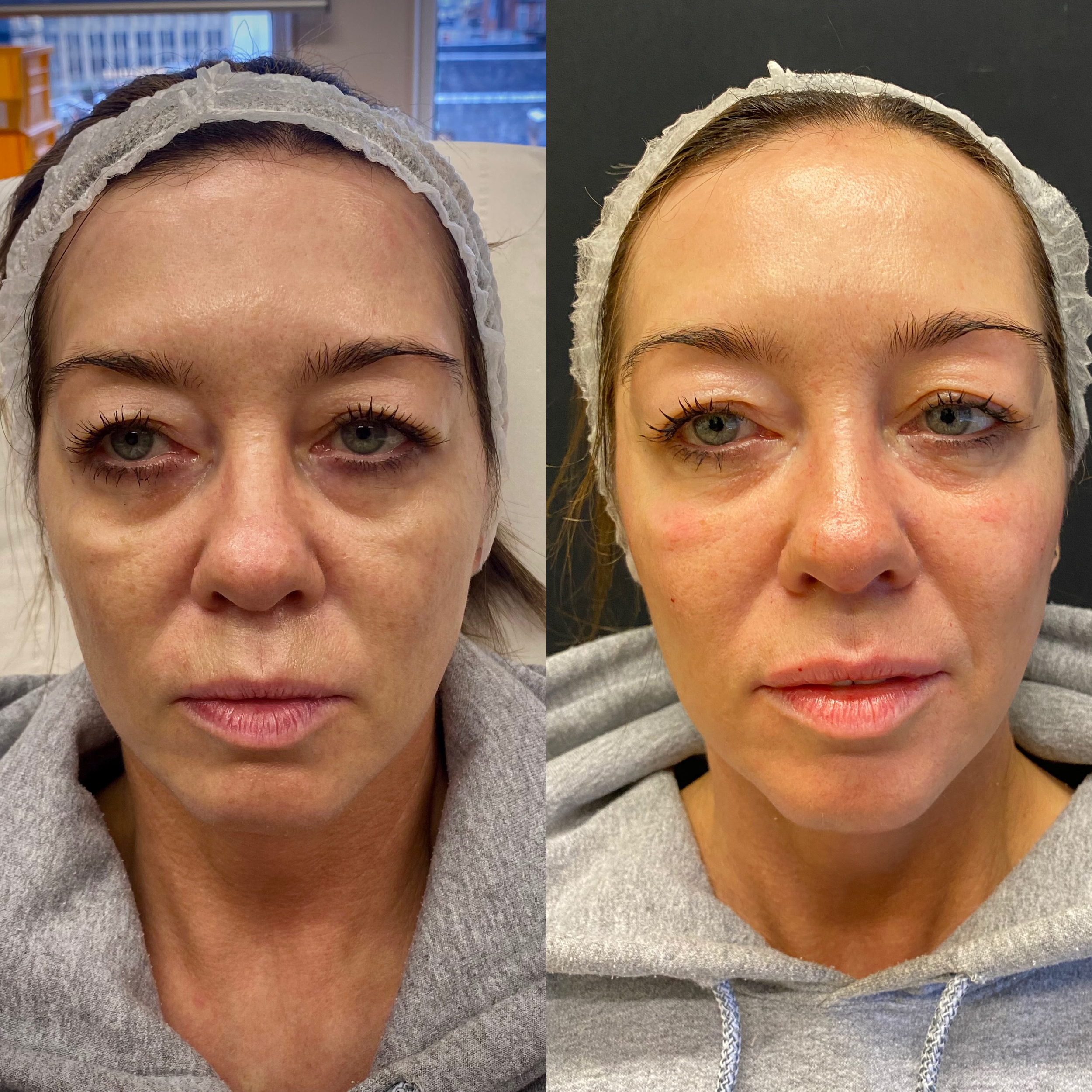How safe is tear trough filler?
Tear trough filler is widely regarded as a safe and effective cosmetic procedure. With advancements in technology and techniques, the risks associated with tear trough filler have significantly reduced, making it a popular choice among individuals looking for a non-surgical solution to under-eye issues. Tear trough filler involves the injection of hyaluronic acid, a substance naturally found in the body, into the hollows beneath the eyes to restore volume and reduce the appearance of dark circles or hollows.
Ultimately, a substance is being injected very delicate and important areas (your eyes!) so it is critically important to both understand the risks of injecting in this area and choose a medically qualified experienced injector who knows the risks and what to do if a complication happens.
Clinics equipped with experienced practitioners, like The Face Clinic Edinburgh, prioritise patient safety by adhering to strict hygiene protocols and using high-quality approved fillers that are specifically designed for the under eye area. Additionally, comprehensive consultations prior to the procedure ensure that the treatment is tailored to individual needs, minimizing any potential complications. While minimal swelling or bruising may occur post-treatment, these effects are temporary and usually subside within a few days, leaving behind refreshed and rejuvenated under-eye areas.
What can go wrong with tear trough filler?
Understanding these risks allows patients to make informed decisions about tear trough filler treatments. Here are a few potential issues that can arise:
1. Infection: While rare, there is a small risk of infection following tear trough filler injections. The injection site can become vulnerable to bacteria, leading to redness, pain, and swelling. Proper sterilization techniques and use of sterile equipment help minimize this risk, but it's crucial for both the clinic and the patient to maintain high standards of hygiene throughout the process.
2. Bruising and Swelling: Bruising and swelling are common side effects of tear trough filler injections. Although temporary, these can be bothersome and may take a few days or even up to a week to resolve completely. Applying cold compresses and avoiding blood-thinning medications prior to the treatment can help minimize the occurrence of bruising and swelling.
3. Uneven Results and Overfilling: Another potential issue is the possibility of uneven results or overfilling, leading to an unnatural appearance. Tear trough filler requires a delicate touch, as injecting too much filler or unevenly distributing it can result in a lumpy or puffy appearance. This is why it's crucial to seek treatment from experienced and skilled practitioners who possess a deep understanding of facial anatomy.
4. Migration and Displacement: Tear trough filler can sometimes migrate or become displaced from the initial injection site. This can potentially create bumps or lumps in unexpected areas, causing an irregular appearance. Massaging the treated area, as advised by the practitioner, can sometimes help alleviate this issue. In more severe cases, dissolving the filler may be necessary.
5. Allergic Reactions: Although rare, allergic reactions to the components of tear trough filler can occur. This can manifest as redness, itching, or swelling at the injection site or even at distant areas. A thorough consultation with a qualified practitioner will help identify any allergies or contraindications before going ahead with the treatment.
6. Vascular Complications: Although extremely rare, severe vascular complications can occur if the filler is inadvertently injected into a blood vessel. This can result in skin necrosis or blindness. To minimize this risk, an experienced injector should have a comprehensive knowledge. If this rare complication does happen, rapid review and reversal treatment is essential to fix the occlusion.
Tear trough filler is a hugely popular and effective mid face treatment - however, like all treatments it is vital to understand the risks involved.
If you are interested in this treatment, book in for a consultation with our advanced filler doctor, Dr Ben Taylor-Davies.

